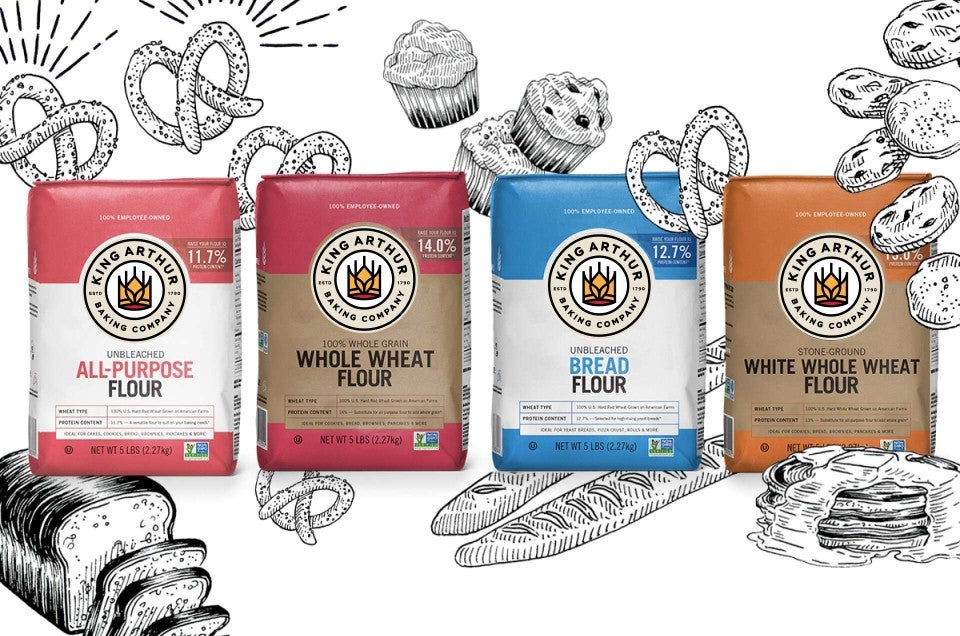


Flour is the most essential ingredient for a baker — the one we reach for in nearly all of our recipes. It comprises the highest percentage of some of our best-loved baked goods: simple sandwich bread, flaky pie crust, and buttery biscuits. And there are so many types of flour — self-rising flour, whole wheat, all-purpose. So which one is the right one for your baking?
Despite what an enormous role flour plays in our kitchens, it’s often overlooked when we talk about ingredients. We carefully choose other components of our recipes, comparing chocolate varieties or debating between types of cheeses. Flour doesn’t get the same attention; many bakers simply assume that flour is flour. But all flour isn’t created equal — and as bakers, we want you to know what that really means.
There are two important considerations: quality and protein content. First, ensure that your flour is the best you can find. Most flour companies bleach their flour with chemicals like chlorine dioxide and benzoyl peroxide to give it an artificially white appearance. Some don’t: King Arthur Flour contains no bleach, no bromate, and no artificial preservatives of any kind.
Second, know about protein content. Every type of flour is milled to have a specific protein content — the higher the protein, the “stronger” the flour. It’s important to use the right flour with the proper protein content for your recipe and also to choose a brand that adheres closely to that number. Some flour brands allow wide fluctuations in their protein content, so every time you use it, you’ll get slightly different results. King Arthur Flour is milled with the strictest specifications in the industry. Baking with flour that’s consistent in protein will give you the best, most consistent results at home.
If your recipe calls for a specific type of flour, great! Follow that. If you’re not sure which flour to use, here’s a quick rundown.
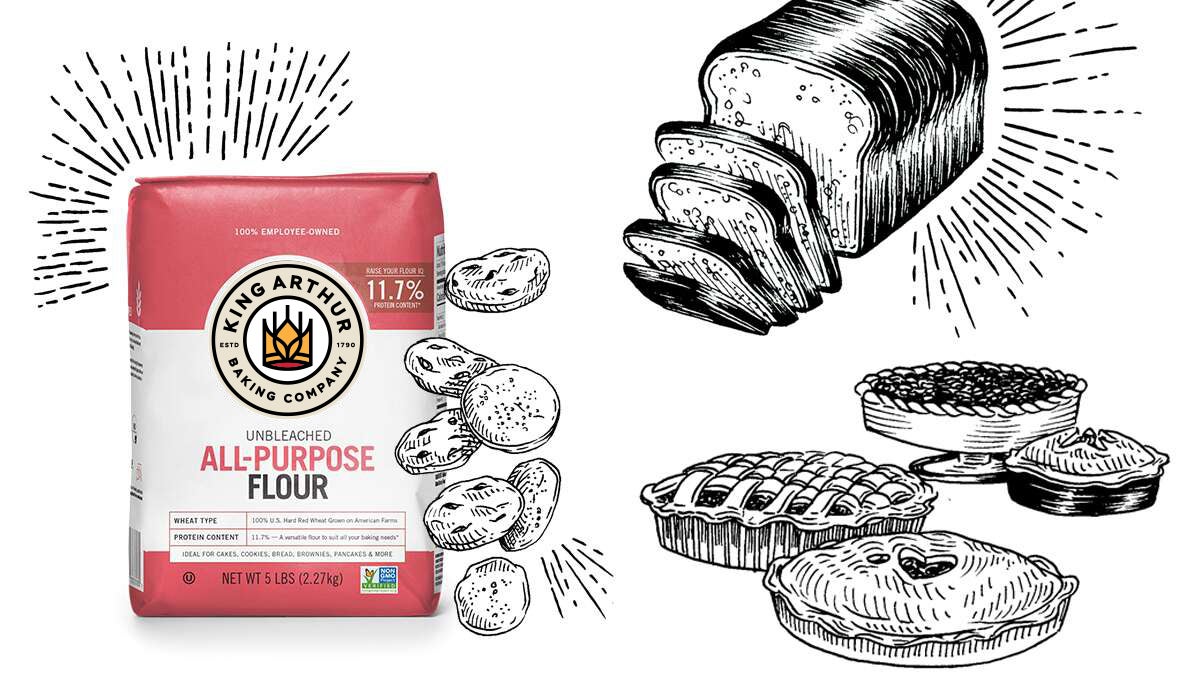
The most versatile “essential” pantry flour. With a medium protein content, you can use all-purpose flour in any recipe calling for flour, but it’s ideal for cookies, muffins, quick breads, and pie crusts. It’s strong enough for breads and mellow enough to create tender scones and biscuits.
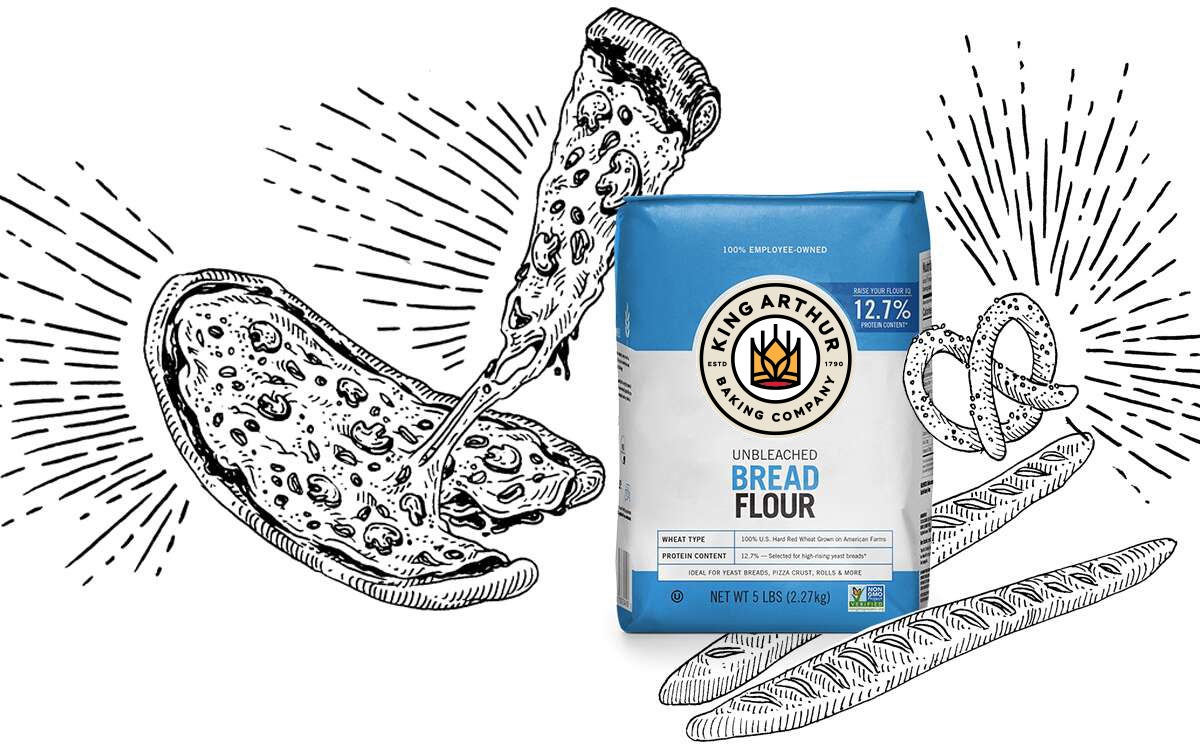
For yeast bread, here’s what you need to know: the higher the protein content, the higher the potential rise. Use bread flour for all your yeast baking, from classic sandwich loaves to bagels to pizza dough.
Learn more about why bread flour makes great bread: Does bread flour really make a difference in your bread? (The answer is yes.)
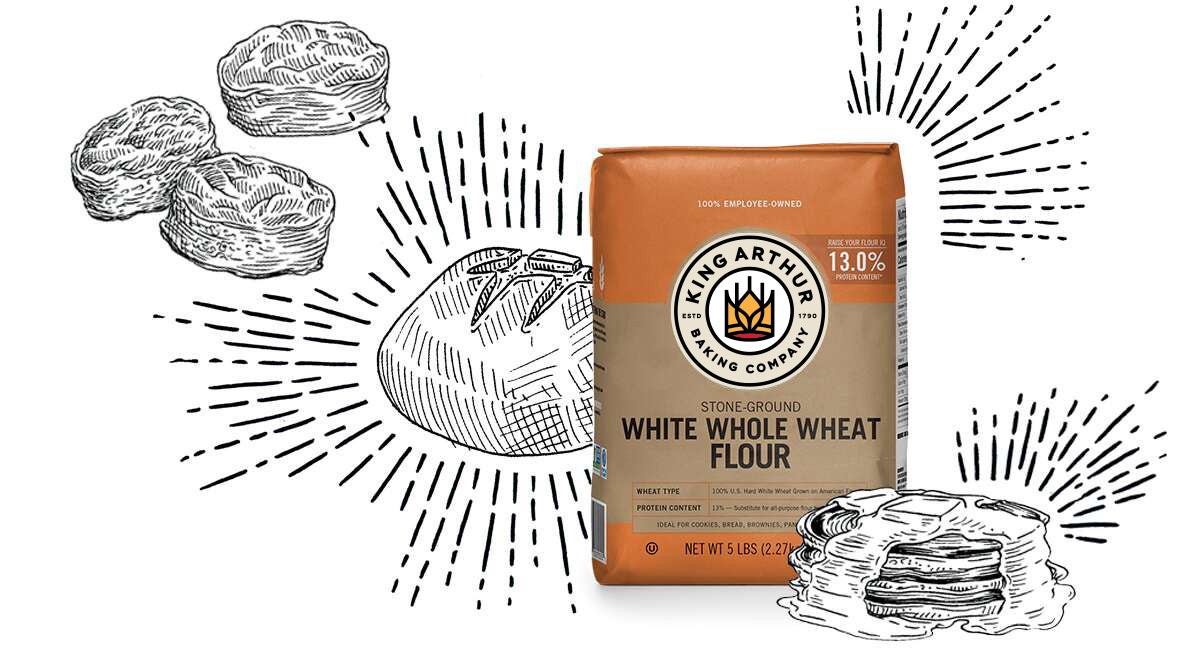
Milled from 100% hard white spring wheat (a lighter-colored grain than the traditional red wheat used in whole wheat flour), this flour has a similar nutritional profile to whole wheat but is mellower in flavor and lighter in color, acting more like all-purpose flour. Takeaway: the wholesomeness of whole wheat with the performance of all-purpose.
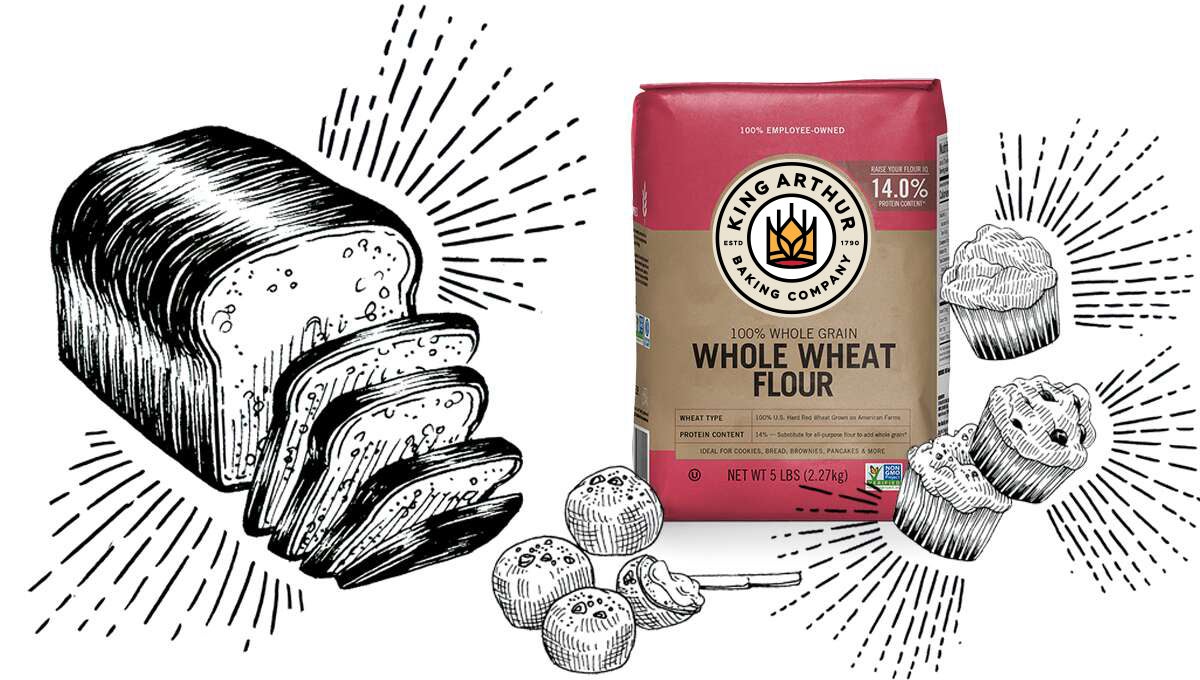
Whole wheat flour is made by milling the entire wheat berry, including the inner germ and outer bran, which gives it more nutrition and stronger, more robust flavor. Use it in whole wheat sandwich bread or try adding it to your favorite baked goods. Start by replacing 25% of the flour called for in your recipe with whole wheat, and increase from there.
While the total protein content is higher in whole wheat flours, leading you to think they might rise the highest of all, that's not how whole wheat bakes. Whole wheat flours contain all the parts of the wheat berry, including the bran and the germ. Bran, when ground, has sharp edges that can cut the strands of gluten that form in the dough, which is why whole grain loaves can be shorter and denser than those made with white flour.
Your baking solution? Add more liquid, which softens the bran and helps the flour behave more like a white flour does in baking. Learn more about how these flours behave in our Complete Guide to Baking with Whole Grains.
Beloved by biscuit bakers everywhere, this combination of soft wheat flour, baking powder, and salt is praised for its creamy taste and lighter-than-air texture. It yields ethereally light and tender biscuits, scones, and pancakes, and saves you time in the kitchen, too (two fewer ingredients to mix in).
Our unbleached cake flour has a protein content of 10% — that lower protein content means it has less gluten-forming potential, making it better suited to tender cakes with a soft, fine crumb. And it’s not just for cake: Our Test Kitchen uses lower-protein cake flour to achieve a melt-in-your-mouth texture in cookies too.
Learn more about baking with cake flour: Cake flour vs. all-purpose flour: What's the difference, and how do I substitute?
For our full range of flour offerings, be sure to visit our online shop to get just the right flour for your baking adventures.
Thanks to illustrator Lucy Engelman for the gorgeous line drawings in this post.
Editor's note: This post was updated in November 2023 to reflect our current flour offerings.

